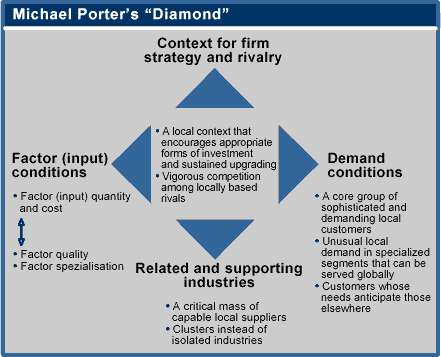What is Fixed Asset Coverage Ratio?


If the ratio is too low, it indicates that the company is investing more in fixed assets but not utilizing them efficiently. If the management does not address it, the company may enter into losses due to high depreciation costs and lower utilization of assets. Accounting ratios are very helpful in analyzing any company’s performance but on the flip side, these ratios calculated using balance sheet on a specific date.
- Investors and creditors use this formula to understand how well the company is utilizing their equipment to generate sales.
- However, they differ in terms of their calculation, relevance, and interpretation.
- When a company makes such significant purchases, wise investors closely monitor this ratio in subsequent years to see if the company’s new fixed assets reward it with increased sales.
It helps to identify the financial stability of the business by analyzing the total debt of the company. Interest coverage ratio This ratio expresses the relationship between net profit before interest and tax and interest payable on long-term debts. Working capital management is a strategy that requires monitoring a company’s current assets and liabilities to ensure its efficient operation. In other words, it’s not enough to merely analyze one period’s asset coverage ratio.
They measure the return on their purchases using more detailed and specific information. Net profit ratio Net profit ratio shows the relationship between net profit and revenue from operations i.e. net sales. Net profit ratio is an indicator of overall operational efficiency of the business. Profitability Ratios These ratios measure the profitability of a business assessing the and helps in overall efficiency of the business. Working capital turnover ratio This ratio shows the number of times the working capital has been rotated in generating sales. Generally, different companies based in different industries use different capital structures.
These fixed assets are always in the form of land, buildings, machinery and other equipment. They are typically used in the balance sheet of the property report as property, plant, and hardware. It is essential that the measure of each current resource not be exaggerated. Fixed assets turnover proportion is an activity proportion that measures how effectively an organisation is using its fixed resources in producing income. Financial specialists utilise this equation to see how well the organisation is using their devices and equipment to produce sales.
Relevance and Use of Fixed Asset Turnover Ratio Formula
If the asset is already depreciated fully does not mean that the asset is necessarily worthless. Many assets are there, the life of which is less, but they prove useful for even 3-5 times over the expected life. So Shanghai automobiles want to decide whether they should buy an apex automobile or not. So for that, Shanghai automobiles want to ensure that the assets of the apex automobile are in good condition. So if the assets came out to be in good condition, then the shanghai automobiles are not required to buy new assets for the furtherance of business. Tangible AssetsTangible assets are assets with significant value and are available in physical form.

One more possible reason could be that the company has outsourced part of the process. Therefore, the turnover and revenue are looking higher where no capital investment is involved. So, as per the example mentioned above, the company has secured its fixed asset coverage ratio to 2.75x. And it is an excellent sign for investors, shareholders, and debt investors. So, whether the company belongs to utility or capital goods, investors will show their investment in investing in this company.
It suggests that fixed asset management is more efficient, resulting in higher returns on asset investments. It also suggests that a significant number of sales are being created with a small number of assets. It could also indicate that the company has begun to outsource its activities after selling off its equipment. Outsourcing would retain the same level of sales while lowering the investment in equipment. Investors and creditors use this formula to understand how well the company is utilizing their equipment to generate sales.
Interpretation & Analysis
It may happen that in capital-intensive and large manufacturing companies, the fixed assets have a higher proportion as compared to current assets. On the other hand, in the service industry or mass production units, the proportion of current and other assets remains more than the fixed assets. Like in hospitals, hotels, power plants, etc., the fixed assets form a substantial portion of the total assets. And sometimes, it may extend even up to 75-80% of the total assets of the company. Finally, the fixed asset turnover ratio calculation is done by dividing the net sales by the net fixed assets, as shown below. Companies with higher fixed asset turnover ratios earn more money for every dollar they’ve invested in fixed assets.

It is likewise useful in analyzing a company’s growth to see if they are augmenting sales in proportion to their asset bases. There is no exact ratio or range to determine whether or not a company is efficient at generating revenue on such assets. This can only be discovered if a comparison is made between a company’s most recent ratio and previous periods or ratios of other similar businesses or industry standards. It indicates the proportion of the company’s fixed assets which are currently frozen or can’t be used for meeting its debt obligations. If there is accumulated depreciation of the fixed assets, this can also be deducted from the average fixed assets value.
The net fixed assets include the amount of property, plant, and equipment, less the accumulated depreciation. Generally, a higher fixed asset ratio implies more effective utilization of investments in fixed assets to generate revenue. This ratio is often analyzed alongside leverage and profitability ratios. The fixed asset turnover ratio is useful in determining whether a company is efficiently using its fixed assets to drive net sales. The fixed asset turnover ratio is calculated by dividing net sales by the average balance of fixed assets of a period.
This fixed asset is useful in calculating overall revenue of the company. When a company uses accelerated depreciation, such as the double declining balance method, the amount of net fixed assets in the denominator of the calculation is artificially reduced. However, the manufacturing companies use this ratio mostly because all manufacturing concerns have significant investments in fixed assets like building and machinery for producing the goods. Thus, if the company’s PPL are fully depreciated, their ratio will be equal to their sales for the period. Investors and creditors have to be conscious of this fact when evaluating how well the company is actually performing.
Investors care about this notion because they want to be able to estimate a return on their investment. This is especially true in the manufacturing business, where large, expensive equipment purchases are common. Creditors want to know that a new piece of equipment will generate enough money to repay the loan that was utilized to purchase it.
Otherwise, operating inefficiencies can be created that have significant implications (i.e. long-lasting consequences) and have the potential to erode a company’s profit margins. High Turnover → The company is implied to be purchasing long-term assets efficiently. The management fixed asset ratio formula needs to determine the right amount of investment in each asset. Firstly, note the company’s net sales, which are easily available as a line item in the income statement. Intangible assets such as goodwill and intellectual property are not counted in the total asset calculation.
The DuPont analysis is a framework for analyzing fundamental performance popularized by the DuPont Corporation. Days payable outstanding is a ratio used to figure out how long it takes a company, on average, to pay its bills and invoices. Yarilet Perez is an experienced multimedia journalist and fact-checker with a Master of Science in Journalism. She has worked in multiple cities covering breaking news, politics, education, and more. We have been producing top-notch, comprehensive, and affordable courses on financial trading and value investing for 250,000+ students all over the world since 2014.
Financial Ratios
A soap production company, Caslim, has its balance sheet for the previous fiscal year showing fixed assets of $100,000. Caslim’s total assets, including patents and other investments in other companies, is $500,000 while its total liabilities are $200,000. The accounting department is to calculate the fixed assets to net worth ratio. The fixed asset turnover ratio is calculated by dividing net sales by the average balance in fixed assets. The asset turnover ratio compares the company’s sales to its asset base.
Fixed Asset Turnover Ratio
It means any asset that can be touched and felt could be labeled a tangible one with a long-term valuation. If the company is analyzing the different possible acquisition candidates, then, in that case, they must analyze assets’ value based on that only they can put a value on them. World-class wealth management using science, data and technology, leveraged by our experience, and human touch.
Fixed Asset Turnover Ratio Calculator – Excel Template
The asset coverage ratio tells creditors and investors how many times the company’s assets can cover its debts in the event earnings are not enough to cover debt payments. Comparing financial ratios with that of major competitors is done to identify whether a company is performing better or worse than the industry average. For example, comparing the return on assets between companies helps an analyst or investor to determine which company is making the most efficient use of its assets. The term “Fixed Asset Turnover Ratio” refers to the operating performance metric that shows how efficiently a company is utilizing its fixed assets to generates sales.
Cash is often described as an ’idle asset‘ because it earns no return and carrying too much cash is considered wasteful. A high ratio could also indicate that the company is not making sufficient use of cheap short-term finance. This measures the ability of the organisation to generate sales from its capital employed. Generally, the higher the better, but in later studies you will consider the problems caused by overtrading .
All of these are depreciated from the initial asset value periodically until they reach the end of their usefulness or are retired. Companies with cyclical sales may have worse ratios in slow periods, so the ratio should be looked at during several different time periods. Additionally, management could be outsourcing production to reduce reliance on assets and improve its FAT ratio, while still struggling to maintain stable cash flows and other business fundamentals.
While improving its asset turnover ratio and trying to maintain consistent cash flows and other business fundamentals. Any management decision should base on a thorough analysis of all these factors, along with other financial indicators. Management should not take any decision in isolation or by seeing this ratio only. The asset coverage ratio is a financial metric that measures how well a company can repay its debts by selling or liquidating its assets. The asset coverage ratio is important because it helps lenders, investors, and analysts measure the financial solvency of a company.
